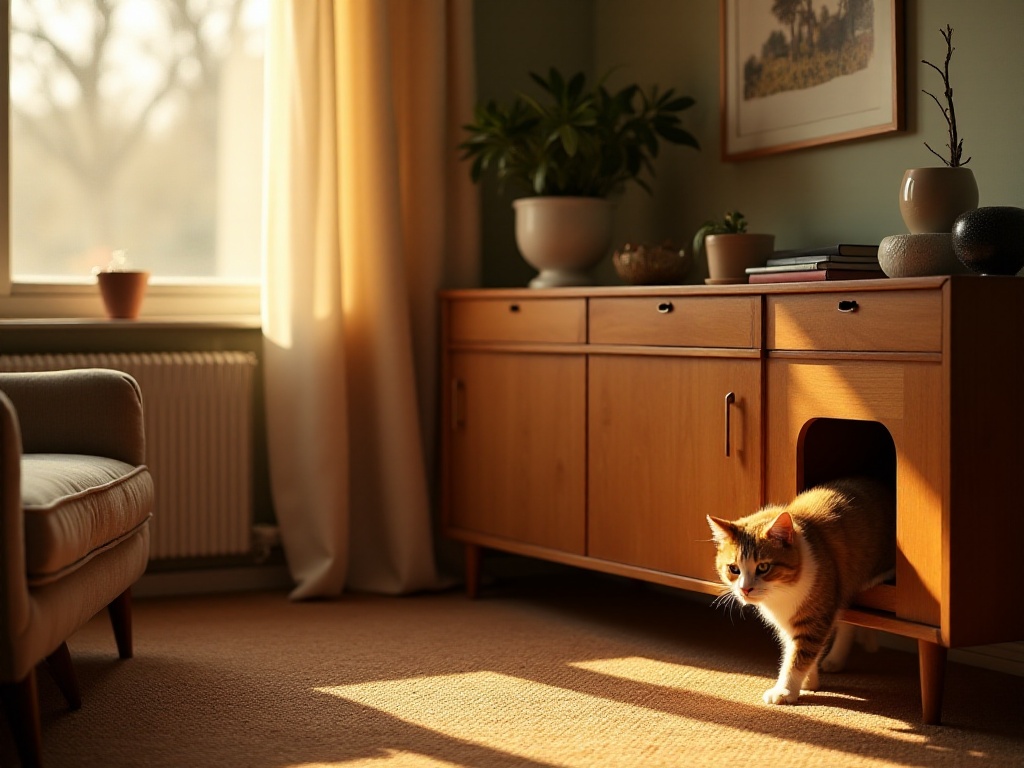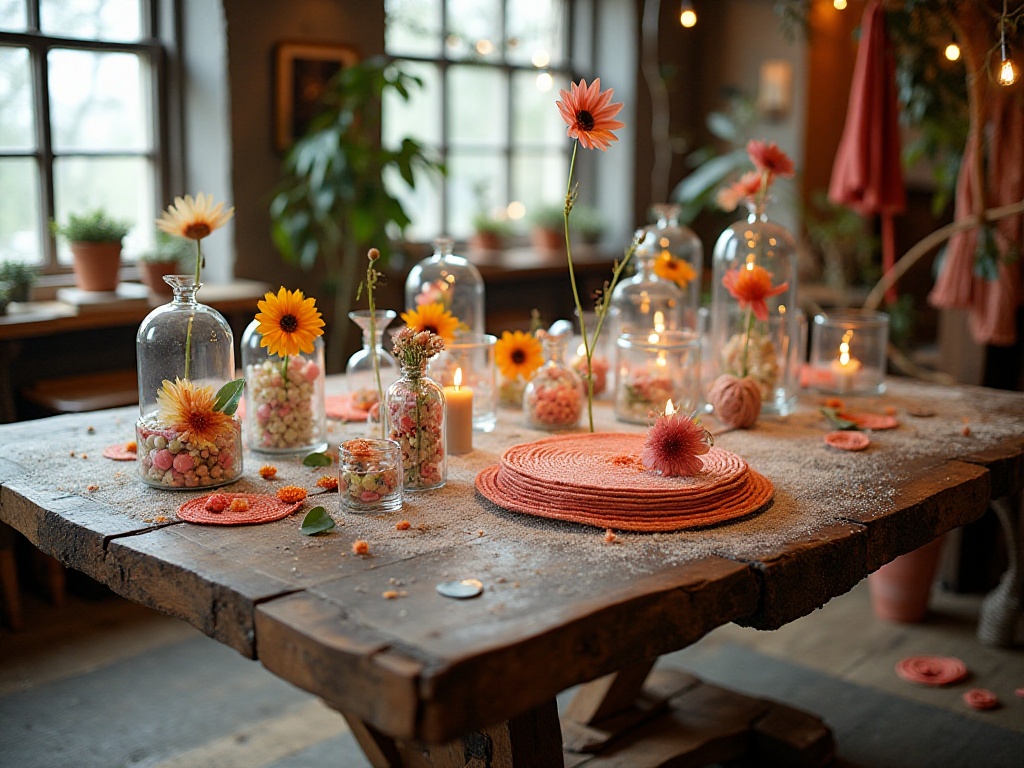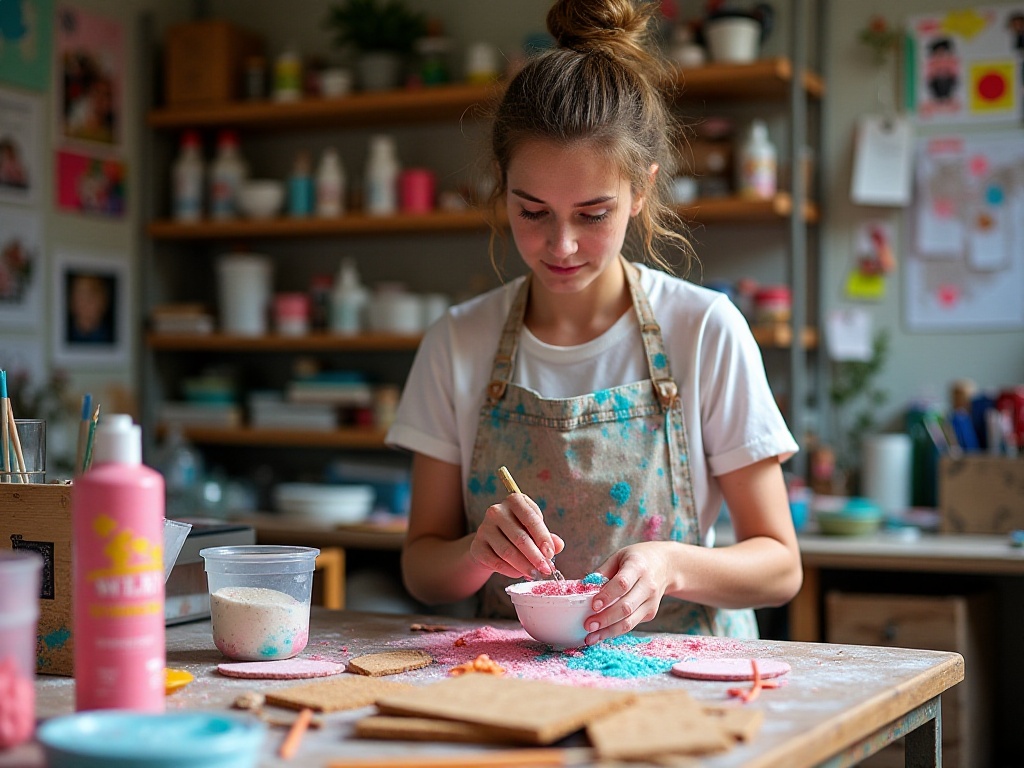Introduction
Hey friends! Today I'm sharing a super exciting topic! Every time you open your closet, don't you see clothes that you really like but don't wear much anymore for various reasons? They might be last year's trends, sizing mistakes that were too big or too small, or just everyday clothes you've grown tired of. As a crafting enthusiast since college, I've developed new ways to transform fabric over the years, and today I'll teach you how to turn all these "retired" clothes into stunning pieces of art!
Design Philosophy
I remember my early struggles with fabric crafting, frantically ordering various tools on Taobao and hoarding materials, only to find that many went unused. After more than a decade of experience, I've realized that the core of fabric transformation isn't about tools and materials, but creative thinking. As my grandmother used to say: "A skilled cook can't cook without rice, but a clever cook knows rice can become rice noodles, rice cakes, and rice wine." This perfectly captures the essence of fabric crafting!
Every time I look at an old piece of clothing, countless transformation ideas pop into my head. Once, while staring at an old sweater, I suddenly thought: with such good elasticity, why not turn it into a stylish yoga mat cover? It's this kind of imaginative thinking that has taken me further along my fabric crafting journey.
Practical Tips
When it comes to transforming old T-shirts, it's truly an endless treasure trove! A simple cotton T-shirt can become at least 5 different items in my eyes, and each one is incredibly practical.
The most popular transformation is turning T-shirts into storage baskets. How do you do it? First, cut the T-shirt into even strips - this step requires patience, and I recommend using a paper cutter and ruler to ensure neat strips. The strips should be 2-3 centimeters wide - any wider and the weaving won't look refined, any narrower and they might break.
After cutting the strips, comes the crucial weaving phase. I like using a three-strand braiding method, just like braiding hair. It might feel chaotic at first, but you'll quickly get the hang of it with patience. Maintain even tension while weaving to avoid a lopsided result. Once you've woven enough, secure the shape with needle and thread. I usually sew multiple lines for durability.
Last year, I demonstrated this technique at a local crafts exhibition, and many young people came to watch. One young girl tried making a small storage basket with her spare T-shirt right there - though the shape was a bit irregular, her sense of achievement made her incredibly happy.
Actually, T-shirts can be transformed into more than just storage baskets - they can become shopping bags, pillow covers, yoga mats, and even floor mats. The key is choosing the right transformation based on the T-shirt's material and pattern. Solid colors work well for basic items, while patterned ones can be used for more creative designs.
Advanced Techniques
If I had to name my most fascinating transformation project, it would definitely be jeans! While trendy bags in stores can cost hundreds or thousands, you can create a unique shoulder bag from an old pair of jeans that rivals boutique quality in both workmanship and texture.
Last year, I transformed a pair of ripped jeans into a bag. The jeans had a natural tear at the knee, which I intentionally incorporated into the front of the bag, adding some vintage rivets around it for decoration. The final product was absolutely amazing - my fashion-forward friends thought it was a limited edition piece from some boutique designer brand, and they still tease me about it to this day.
There are many nuances to transforming denim. First, consider the fabric choice - wash-worn denim is softer and suitable for the main body of the bag; raw denim is stiffer and better for the bottom and edges. Second is the dismantling technique - since the fabric from one pair of jeans is limited, you need to plan the cutting layout for each component in advance.
I usually repurpose the back pockets directly as external pockets for the bag, which is both efficient and practical. The waistband can be cut to make straps, and the distinctive jean stitching can be preserved as decorative elements. Most importantly, take full advantage of denim's characteristics during transformation, such as adding some distressing to give the bag more texture.
Creative Inspiration
When it comes to creativity, I have so much to share! Many people think creativity is about wild imagination, but often the best ideas come from the most ordinary moments in life.
Once while organizing my closet, I found a pile of outdated scarves. These scarves were trendy purchases with beautiful patterns and colors, but they just didn't match current aesthetics. Just as I was pondering what to do, I glanced at the succulents on my windowsill and had a sudden inspiration: why not turn these scarves into planter covers?
I immediately got to work with an orange scarf. First, I made a basic waterproof liner, then cut the scarf to size, and through folding and stitching, created a planter cover with oriental flair. The result was surprisingly good - the scarf's pattern gave the simple planter an artistic touch.
This unexpected discovery made me start noticing possibilities everywhere in life. Later, I tried making teacup sleeves, jewelry box linings, and decorative straps for backpacks using scarves. Each attempt brought new surprises.
Creative inspiration really is everywhere - the key is maintaining a heart that's keen to discover. Sometimes just sitting in a cafe, watching water droplets form patterns on cups can spark new design ideas. I've developed a habit of carrying a small notebook to record various inspirations from daily life.

Tool Selection
Let me have a good chat with you about tools. Many beginners think they need lots of professional equipment, but that's really not necessary. Based on my years of experience, a basic home sewing machine (the most basic kind will do) plus a basic sewing kit can handle 90% of transformation projects.
Speaking of sewing machines, my first one was bought from a second-hand market for just 300 yuan. Although it was the most basic straight-stitch machine, it worked perfectly for several years without any issues. For fabric transformation, mastering basic straight and zigzag stitches is enough - those fancy features often go unused.
Essential tools in a basic kit include: scissors (preferably one large pair for fabric and one small pair for threads), various needles (both hand and machine needles), threads in different colors, measuring tape, chalk, pins, and a seam ripper. All these things together cost only one or two hundred yuan.
I remember when I first started fabric crafting, I didn't even have a sewing machine - I did everything by hand with just a needle and thread. While it was slower, that period helped me build really solid foundational skills. Looking back now, that feeling of sewing stitch by stitch was really precious.
The most important thing about tool selection is finding what works for you. I've seen many people buy expensive tools right away, only to lose confidence because they couldn't use them properly. It's better to start with the basics and gradually add new tools as your skills improve.
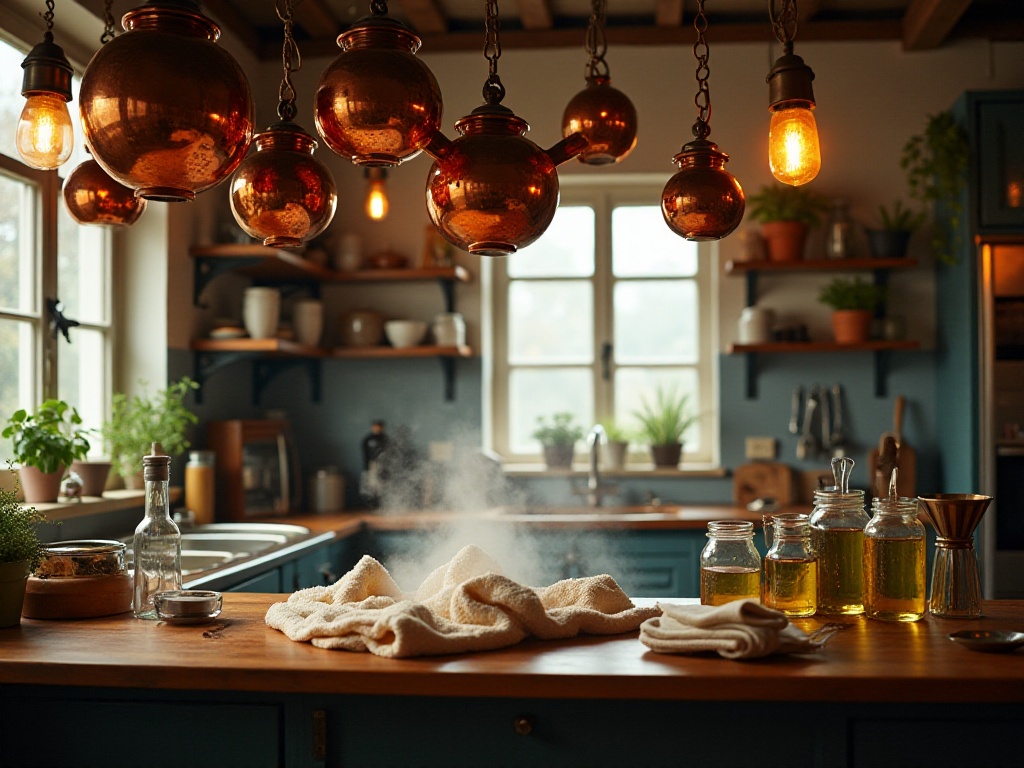
Color Matching
Color matching is the most interesting part of fabric transformation! Through years of practice, I've developed a simple but useful principle: dark fabrics are suitable for bag bottoms and edges, while light colors work well for decoration and linings. This ensures both practicality and aesthetics.
I have a special notebook with over 200 different color combination schemes. I refer to it whenever I start a new project. These schemes include not just color combinations, but also matches between different textures and patterns.
For example, denim is incredibly versatile. Dark denim paired with beige linen creates a vintage literary feel; combined with bright canvas, it gives off an energetic street vibe; when matched with ethnic ribbons, it creates a bohemian exotic style.
When choosing colors, I pay special attention to seasonal feelings. In spring and summer, I use more bright colors like mint green, lemon yellow, and coral pink - these energetic tones. For fall and winter, I tend to use more subdued colors like camel, navy, and burgundy - these warmer tones.
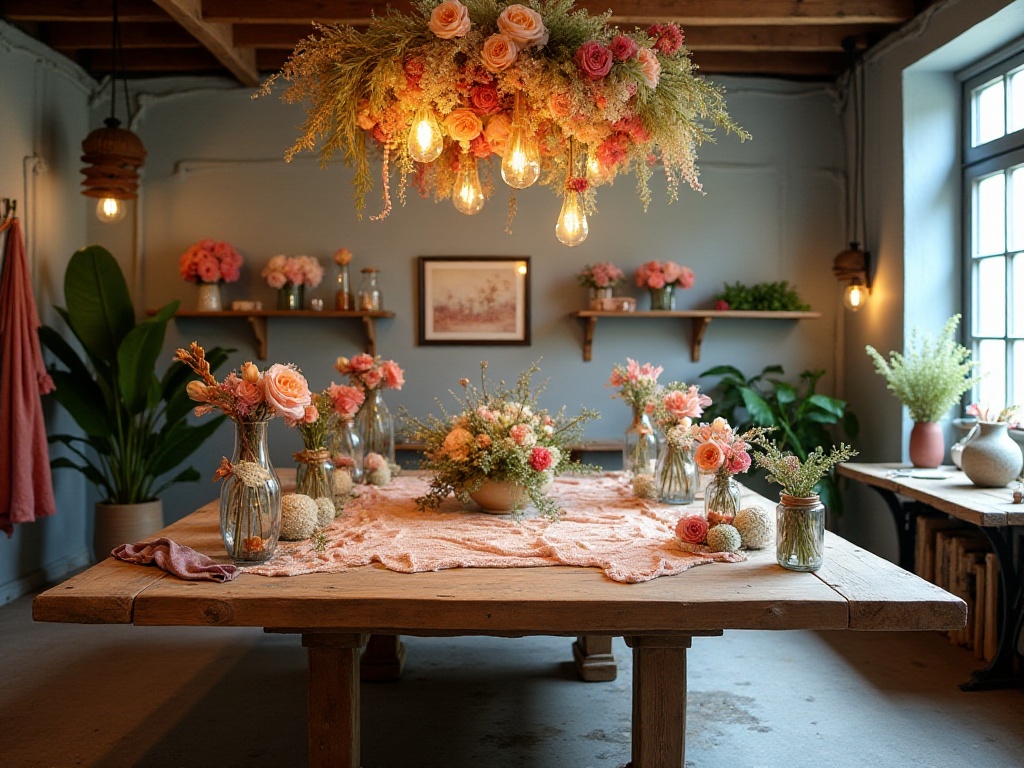
Innovation Breakthroughs
There's endless discussion about innovation, but my proudest work was definitely transforming a wedding dress into a set of home soft furnishings. This project was inspired by a special customer who wanted to turn her mother's wedding dress into home decorations to preserve this precious memory.
This project wasn't simple. Wedding dresses have special materials, including sheer fabric, delicate lace trim, and intricate bead decorations. I spent an entire week planning how to use these materials. The final plan was: using the dress's lace for window curtain trim, the skirt for sofa cushions, and redesigning the beads and decorations into wall hangings.
I remember being particularly worried about ruining the original pleating effect when handling the wedding dress skirt. Later, I thought of a trick: first using a steam iron to set the fabric, then cutting it to the needed shape. This not only preserved the fabric's original texture but made the final product more refined.
The most delightful part was the cushion design. I rearranged the original pearls and rhinestones from the wedding dress into an elegant floral pattern. Each bead was hand-sewn - though the process was tedious, the final effect was truly stunning.
After completing this project, the customer was very moved. She said that every time she sees these decorations, she can picture her mother in the wedding dress, while feeling particularly warm because this precious memory continues to accompany her in another form.
Practical Sharing
That huge project I took on last year was truly a turning point in my career! Transforming 100 old garments into a complete set of soft furnishings for a coffee shop was both exciting and nerve-wracking.
The first challenge was material classification. I categorized these 100 garments by material, color, and style. Cotton fabrics were suitable for seat cushions and back pillows, being both durable and comfortable; silk and chiffon-like light fabrics were perfect for decorative hangings; denim and canvas-type sturdy materials were used for storage bags and tablecloths.
The most interesting part was designing the "Story Wall." I preserved some interesting clothing tags and brand logos, collaging them into a wall decoration full of stories. Each label had a story behind it, some from foreign brands donated by international students, others were vintage labels from old items, adding many conversation pieces to the cafe.
The seating area design was also special. I wove different colored T-shirts into unique cushion covers, creating what looked like a colorful mosaic from afar. To add interest, I embroidered different patterns on each cushion, some simple geometric shapes, others cute animals.
The bar area featured lots of denim elements. I made a row of storage pockets from old jeans pockets for utensils and odds and ends; the denim texture perfectly merged with the cafe's industrial style, creating a unique atmosphere.
This project made me deeply realize that fabric transformation isn't just a craft, but a sustainable lifestyle. Through creative design, these clothes that would have been discarded not only gained new life but created unique artistic value. Finally, this cafe became a local social media hotspot due to its unique design style, with many young people coming specially to take photos every day.
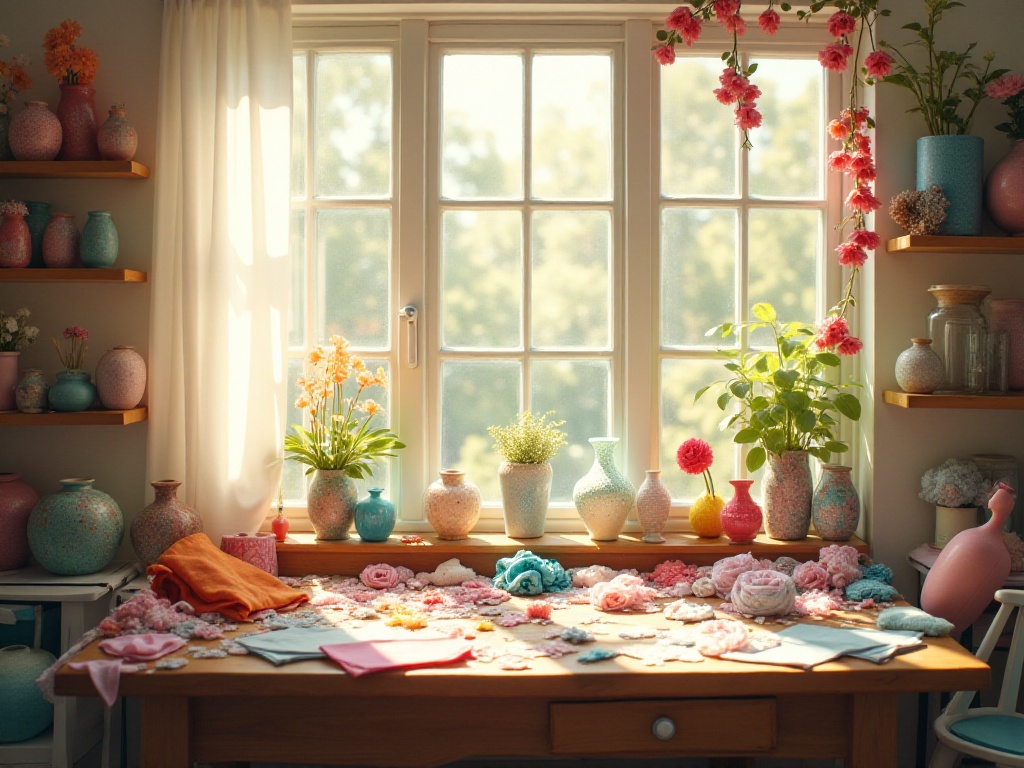
Cost Control
Speaking of costs, this is a topic many people are particularly concerned about. Many think fabric transformation must be expensive, but it's quite the opposite! On average, each of my pieces costs no more than 50 yuan in additional materials.
For example, the T-shirt storage basket mentioned earlier only needs some crochet hooks and fixing thread (about 30 yuan) besides the T-shirt itself (which is usually unused, so zero cost). Even adding decorative accessories like rivets, zippers, and metal clasps, the total cost won't exceed 50 yuan.
Similarly, for denim bag transformations, the main costs are sewing thread and hardware. I usually buy these materials in bulk on Taobao, which is more economical. The additional cost for one bag is usually between 40-60 yuan, while the finished product is worth at least 200 yuan.
The key to controlling costs is making full use of materials. For example, a pair of jeans can make a bag's main body, and the leftover scraps can be used for decoration or transformed into other small items. I usually collect all scraps - you never know when they might come in handy.
Concluding Thoughts
These years of fabric transformation experience have taught me deeply: transforming old items not only gives objects new life but makes us rethink our relationship with possessions. Each piece carries unique memories and emotions, just as the old saying goes: "Each stitch weaves warmth; each craft transmits emotion."
In this era of environmental consciousness, fabric transformation is particularly meaningful. It not only makes our lives more creative but contributes to environmental protection. The sense of achievement when seeing old clothes come back to life in my hands is indescribable.
Through these years of practice, I increasingly feel that fabric transformation isn't just a craft, but a life attitude. It teaches us to view every detail of life with creative eyes and solve various problems in clever ways.
Finally, I want to say that there are no standard answers in fabric transformation - what's important is letting creativity flow freely and enjoying the pleasure of creating with your hands. Everyone can be a designer of life, making ordinary items shine extraordinarily.
Are you interested in fabric transformation? Feel free to share your thoughts and experiences in the comments. Next time we can discuss more interesting handcraft topics.


